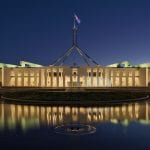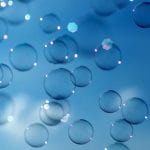Around The Web
NA Markets: WCI continue post-auction rise, as RGGI waits for Q3 sale results
Large-scale wind and solar power 'could green the Sahara'
Energy efficiency market in hot water over policy plans
 Stability in energy efficiency markets came to an abrupt end in August due to concerns about future supply from residential sources, the Victorian election and solar hot water policy announcements.
Stability in energy efficiency markets came to an abrupt end in August due to concerns about future supply from residential sources, the Victorian election and solar hot water policy announcements.
The post Energy efficiency market in hot water over policy plans appeared first on RenewEconomy.
EU Market: EUAs shoot back towards 10-year high as power soars
New Jersey, Virginia close to completing RGGI regulations, as emissions cap negotiations come to a head
Threatened species inquiry told public servants think Australia is failing
Union tells Senate inquiry more than 90% of staff working with threatened species say Australia’s performance is poor
The Australian government is failing to meet its domestic and international obligations to protect threatened species and existing environment laws are inadequate, according to public servants working on endangered wildlife.
The admissions are contained in a damning submission by the Community and Public Sector Union to a Senate inquiry investigating Australia’s high rate of fauna extinctions.
Continue reading...Global soft drink firms back plan to eliminate packaging waste
Industry makes biggest commitment yet to ending its use of throwaway plastic bottles
Global soft drink companies have made their biggest commitment yet to eliminating the use of throwaway plastic bottles, in an action plan presented to parliament.
In a report sponsored by the likes of Danone, Suntory and Nestlé, the companies give unequivocal backing to a government-implemented deposit and return scheme. Their ambition is for zero plastic packaging to be sent to landfill or escape into the natural environment by 2030, and for packaging to be made entirely from recycled or renewable materials or both.
Continue reading...US Director, Land Life Company – Los Angeles, California
California releases draft tropical forest offset standard as it prepares to revisit contentious REDD issue
Most of countryside now devoid of hedgehogs, study finds
Something ‘fundamentally wrong’ in rural landscape, scientists say, with numbers thought to have fallen 80% since 1950s
A “perfect storm” of intensive farming and rising badger populations has left most of the countryside in England and Wales devoid of hedgehogs, according to the first systematic national survey.
The research used footprints left by hedgehogs in special tunnels to reveal that they were living at just 20% of the 261 sites surveyed. Hedgehogs, which topped a vote in 2013 to nominate a national species for Britain, were significantly less common where badgers were more numerous. Badgers eat hedgehogs and also compete for the beetles and worms the prickly animals consume.
Continue reading...Aeolus: Space laser starts chasing the wind
'Twitter mining' for ants, spiders and birds
Government to issue temporary work visas to help UK fruit farmers
Growers welcome move but 2,500 visas for pickers is not enough to plug labour gap
The government has announced a new temporary work visa for agricultural workers in response to a two-year campaign by farmers to plug the gap in the labour force opened up by Brexit.
While welcomed by farmers, it has also been immediately criticised because it is limited to 2,500 people a year, barely touching the needs of British summer fruit and vegetable growers who point out that horticulture employs 60,000 workers a year, mostly from eastern Europe.
“To have any effect in terms of supporting our successful industry, (a desire much-stated in the release) around 10,000 are needed now – not 2,500 – this number will have little effect on the current shortages UK farms are facing as we speak. The proposal represents a 4% increase in a shrinking workforce, said Nick Marston chairman of British Summer Fruits.
Drone footage shows world's largest offshore windfarm – video
The world’s largest offshore windfarm has opened off the Cumbrian coast. Walney Extension covers 145 sq km of the Irish Sea and has a capacity of 659 megawatts, enough energy to power 590,000 homes
Continue reading...COMMENT: Australia is not on track to reach 2030 Paris target (but the potential is there)
The fall and rise of demand response, and the power of “negawatts”
 In the crazy world of Australian climate and energy policy, if you wait long enough, an idea killed off by one government eventually comes back and saves the day.
In the crazy world of Australian climate and energy policy, if you wait long enough, an idea killed off by one government eventually comes back and saves the day.
The post The fall and rise of demand response, and the power of “negawatts” appeared first on RenewEconomy.
Fair dinkum! Renewables and storage soon to be cheaper than existing coal plants
 The point where new wind and solar, backed by energy storage, become cheaper than operating old coal plants is not far away.
The point where new wind and solar, backed by energy storage, become cheaper than operating old coal plants is not far away.
The post Fair dinkum! Renewables and storage soon to be cheaper than existing coal plants appeared first on RenewEconomy.
World's largest offshore windfarm opens off Cumbrian coast
Walney Extension will power 590,000 homes amid fears Brexit could stifle growth
The world’s biggest offshore windfarm has officially opened in the Irish Sea, amid warnings that Brexit could increase costs for future projects.
Walney Extension, off the Cumbrian coast, spans an area the size of 20,000 football pitches and has a capacity of 659 megawatts, enough to power the equivalent of 590,000 homes.
Continue reading...16 renewable hydrogen projects backed by ARENA grants
 ARENA offers $22.1m in funding to 16 different R&D projects working to fast-track establishment of national renewable hydrogen industry.
ARENA offers $22.1m in funding to 16 different R&D projects working to fast-track establishment of national renewable hydrogen industry.
The post 16 renewable hydrogen projects backed by ARENA grants appeared first on RenewEconomy.
The inconvenient truths about South Australia’s renewable success
 Conservatives are still using South Australia as a renewables punching bag. But the reality is the state has shown how solar and wind, with battery storage and smart management, can drive down prices and emissions, and deliver grid stability.
Conservatives are still using South Australia as a renewables punching bag. But the reality is the state has shown how solar and wind, with battery storage and smart management, can drive down prices and emissions, and deliver grid stability.
The post The inconvenient truths about South Australia’s renewable success appeared first on RenewEconomy.



